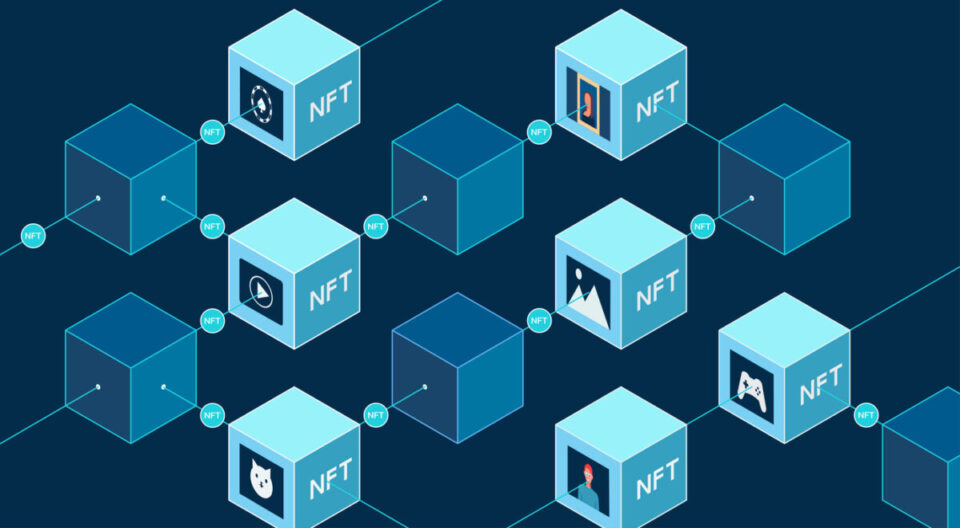Non-fungible tokens (NFTs) have taken the world by storm. From the early days of a little-known technology for small communities of collectors, NFTs have conquered the news cycle, while artists, gaming developers and athletes have all played their part in the stratospheric expansion of the NFT world.
Adi Ben-Ari is the CEO of Applied Blockchain. Having worked in the blockchain industry for six years, with over a year of this working as CTO for Tallysticks, where he worked with smart contracts, Ben-Ari is experienced with the technology and its uses outside of crypto.
Here he explains how NFTs can continue their monumental trading volume as innovative things are tokenised:

Reports show that NFT trading volume has surpassed $10billion dollars in the past quarter. This represents a staggering increase of 38,000% on the previous year and global brands and financial titans are paying attention. With numerous high-profile and large-scale investments in the technology, it is evident that NFTs are quickly outgrowing their utility as digital artworks.
The key is the versatile blockchain technology underlying these tokens. This presents a fast, incorruptible, and decentralised framework of ownership which allows their adoption for a vast number of real-world uses. As the boom of unique collectibles on social media platforms inevitably fades, the second wave of NFT adoption – already in its early stages – will show that the universal adaptability of the technology can have a significant impact on all our lives.
NFTs as a marketing channel
Some of the world’s biggest brands, including Coca-Cola, Microsoft and Nike have entered the NFT space, demonstrating that these digital assets hold the key to a revolutionised marketing model. This cultural shift presents consumer-facing companies with an opportunity to replace their reliance on monetising content through intermediaries such as streaming platforms with a creator-led model, relying on person-to-person communities.
As unique digital assets gain value through trading on dedicated NFT marketplaces, items such as unique gifts, exclusive tickets or digital vouchers can be used to generate brand exposure and awareness through consumers. Just as targeted ads on the internet changed the marketing world, this new decentralised model can guarantee widespread and personalised reach through the digital equivalent of word of mouth.
While the trading platforms on which these transactions take place are still somewhat in their infancy, new and ever more sophisticated platforms running on a variety of blockchains are founded every month. Where the Ethereum blockchain has been used for many NFTs to date, lower-value, more granular NFTs are likely to use platforms with lower transactions fees, ensuring wide distribution for all kinds of NFTs, no matter their type.
Shaking up the music streaming model
Another application lies within the music industry. With the decline of physical and digital downloads, music artists are relying on income from streaming, which tends to reward intermediaries like streaming platforms and record labels disproportionately. As the average artist earnings from streaming are vanishingly low, NFTs are an opportunity for artists to regain control of their music through smart contracts embedded in the blockchain underlying NFTs.
Smart contracts can be programmed to perform a range of automated actions once certain conditions have been fulfilled, without needing to be verified by an intermediary. This means artists can tokenise their own songs while specifying a pre-defined cut of any resale revenue. This way, fractionalised shares of song royalties can be owned by music fans, creating an unprecedented connection between musicians and their audiences.
As the pandemic has shown, revenue from live performance, often a large part of a musician’s earnings, can fall away from one day to the next. NFTs can provide a diversified income stream for music artists, including products such as digital merchandise, virtual companion pieces to visual artworks accompanying songs, and many more.
Tickets and transactions
While NFTs are already being adopted by brands for marketing purposes and music artists for closer audience connection, there are countless other possibilities in which the technology can accompany our lives.
One example is the realm of event ticketing. With ticket fraud and black-market resales depriving event organisers of millions of dollars every year, it is estimated there are $15.2billion in “scalped” ticket revenues that do not support the music industry, the live performance or sports sectors, or indeed benefit audiences, in any way. The unique blockchain protocols of NFTs provide a solution to the problem. The transaction made by buying any NFT ticket is immutably stored on the blockchain and is then easily verifiable by the event host. Any unauthorised secondary sales or wallet transfers can also be easily identified.
Through smart contracts, the NFT tickets can also provide a variety of options, including resale splits and exclusive content for ticketholders. This way, tickets can also become collectibles in themselves and generate value by being resold on marketplaces after the event has taken place. This overlap between collectible value and real-world use is the key interface making NFTs such a uniquely valuable innovation.
While descriptions of NFTs as a time-limited bubble are still prevalent, the token revolution is well underway. From marketing models to ticketing systems and custodied physical asset transactions, the technology’s versatility and applicability is evidently already recognised by businesses and customers alike, making widespread future uses of NFTs inevitable.




